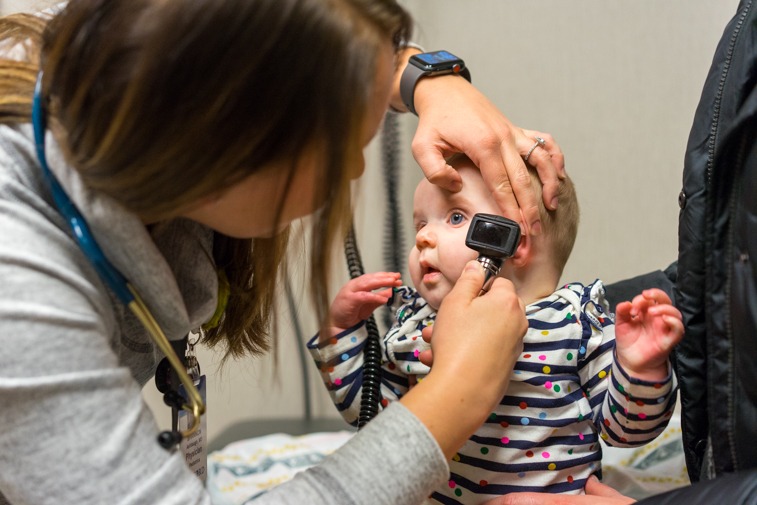Winter is here, and so is cold and flu season, which means ear infections.
An ear infection is the result of bacteria growing in the fluid in the of the middle ear. An ear infection is common to get after having a cold. Ear infections are most often seen in children due to the small anatomy of their eustachian tubes.
They are prevalent in the first years of life, and although they can happen at any time, a parent should be more alert of them during the fall or winter when respiratory infections are on the rise.
Symptoms of an ear infection
When your child has an ear infection, it will typically start with a cold. They will most likely have a cough, congestion and a runny nose. A common indication of an ear infection is when your child gets a fever after the cold symptoms appear. If the fever lasts for more than 48 hours, then it’s time to get your child’s ears looked at, said Shannon Carruthers, M.D., a pediatrician at Sanford Harrisburg Clinic in South Dakota.
With an ear infection, pain in the ear can be intense. Older children will be able to verbalize this, but obviously babies cannot. Excessive crying might mean that your baby is experiencing pain and it is time to bring them in.
Some other common symptoms your child may display are fussiness and crying, poor feeding and trouble sleeping. The pain is usually worse at night, and lying down can make it worse.
In the meantime, before your doctor visit, you can administer Motrin or Tylenol to relieve the pain, Dr. Carruthers said.
Treatment and prevention
The doctor will treat your child’s ear infections according to their age and the severity of the condition.
If your child is under 6 months of age, an antibiotic will treat them. If the child is over 6 months, the ear infection will more than likely resolve on its own. The doctor can give something to control the pain until the fluid clears the ear. At home, you can use nasal spray to suction drainage from the nose and keep administrating Motrin/Tylenol as often as the doctor recommends.
You prevent an ear infection the same way you prevent a cold. Good hand washing and proper hygiene are essential. Living in a smoke-free house, being free of second-hand smoke and getting all vaccinations are also good ways to prevent ear infections.
Ear tubes
Some children prone to ear infections may benefit from the insertion of tubes in their ears that drain fluid out of the middle ear, reducing the risk of ear infection. They are small, most often plastic or metal and surgically implanted in the eardrum by an ear, nose and throat surgeon.
Children having prolonged or recurrent fluid-related problems like hearing or balance issues, ear pain or infection are the most likely candidates for ear tubes. Most often these children are between the ages of 1 and 3 years old. Ear tubes don’t affect speech development. They can improve hearing along with ear infection-related problems in behavior, sleep or communication.
Surgery is normally quick and simple, taking place in 15 minutes under general anesthesia on an outpatient basis with patients returning home the same day. Surgeons open a small hole in the eardrum to drain the fluid and relieve pressure from the middle ear. They then place the small tube in the eardrum opening to allow airflow into the middle ear and keep fluid from building up.
Follow-up care is required to monitor the tubes, but the tubes normally fall out on their own six to 12 months after surgery.
Though tubes do provide tangible benefits, there are small associated risks that should be considered. In some cases, they leave a small hole in the eardrum after coming out, which requires a surgical repair. Some children still develop ear infections after they are placed.
Learn more
- Infant colds: What’s normal and what’s not
- How to handle swimmer’s ear this summer
- The difference between allergies and sinus infections
…
Posted In Children's, Ear, Nose & Throat, Family Medicine, Health Information, Healthy Living
